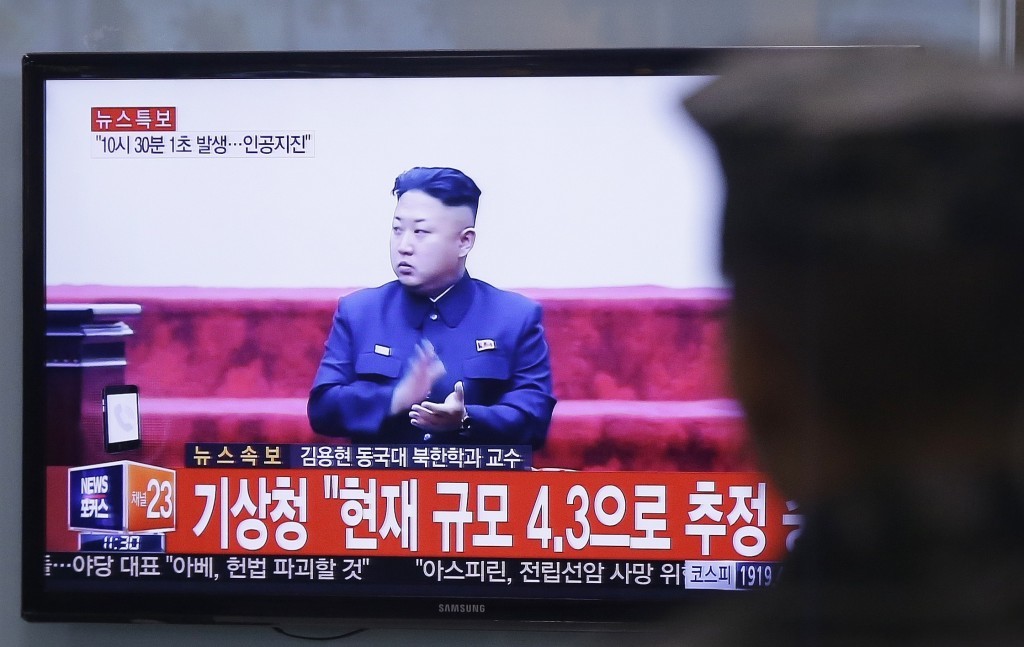
The strategic missile that North Korea tested over the weekend can carry a nuclear warhead, the country has said.
The official Korean Central News Agency said the missile fired on Sunday was a Hwasong-12 “capable of carrying a large-size heavy nuclear warhead”.
The South Korean, Japanese and US militaries said the missile flew for half an hour and reached an unusually high altitude before landing in the Sea of Japan.
Tokyo says the flight pattern could indicate a new type of missile.
Japanese officials say the missile flew for about 30 minutes, travelling about 500 miles and reaching an altitude of 1,240 miles.
Outside experts do not believe the North can do that yet, but each new test pushes the country closer to the goal.
The launch on Sunday is an immediate challenge to South Korea’s new leader, a liberal elected just five days earlier who expressed a desire to reach out to North Korea.
North Korea’s push to boost its weapons programme also makes it one of the Trump administration’s most urgent foreign policy worries.
The missile flew for half an hour and reached an unusually high altitude before landing in the Sea of Japan, the South Korean, Japanese and US militaries said. Tokyo said the flight pattern could indicate a new type of missile.
North Korea’s official Korean Central News Agency called the missile a “new ground-to-ground medium long-range strategic ballistic rocket Hwasong-12 … capable of carrying a large-size heavy nuclear warhead”.
Leader Kim Jong Un was said to have witnessed the test and “hugged officials in the field of rocket research, saying that they worked hard to achieve a great thing,” according to KCNA.
The launch jeopardises new South Korean president Moon Jae-in’s willingness to talk to the North, and came as US, Japanese and European navies gather for joint war games in the Pacific.
“The president expressed deep regret over the fact that this reckless provocation … occurred just days after a new government was launched in South Korea,” senior presidential secretary Yoon Young-chan said.
“The president said we are leaving open the possibility of dialogue with North Korea, but we should sternly deal with a provocation to prevent North Korea from miscalculating.”
Mr Moon, South Korea’s first liberal leader in nearly a decade, said as he took his oath of office last week that he would be willing to visit the North if the circumstances were right.
The UN Security Council will hold closed consultations about the launch on Tuesday afternoon.
The Security Council has adopted six increasingly tougher sanctions resolutions against North Korea.
President Donald Trump’s administration has called North Korean ballistic and nuclear efforts unacceptable, but it has swung between threats of military action and offers to talk as it formulates a policy.
Japanese officials said the missile flew for about 30 minutes, travelling about 500 miles and reaching an unusually high altitude of 1,240 miles.
South Korea’s Joint Chiefs of Staff said it was launched from near Kusong, in North Phyongan province.
The US Pacific Command said “the flight is not consistent with an intercontinental ballistic missile,” a technology the North is believed to have tested clandestinely by launching rockets to put satellites in orbit.
David Wright of the Union of Concerned Scientists, said the missile could have a range of 2,800 miles if flown on a standard, instead of a lofted, trajectory – considerably longer than Pyongyang’s current missiles.
He said Sunday’s launch – the seventh such firing by North Korea this year – may have been of a new mobile, two-stage liquid-fuelled missile North Korea displayed in a huge April 15 military parade.
Japanese Prime Minister Shinzo Abe told reporters the launch was “absolutely unacceptable” and that Japan would respond resolutely.
The White House took note of the missile landing close to Russia’s Pacific coast and said that North Korea has been “a flagrant menace for far too long”.